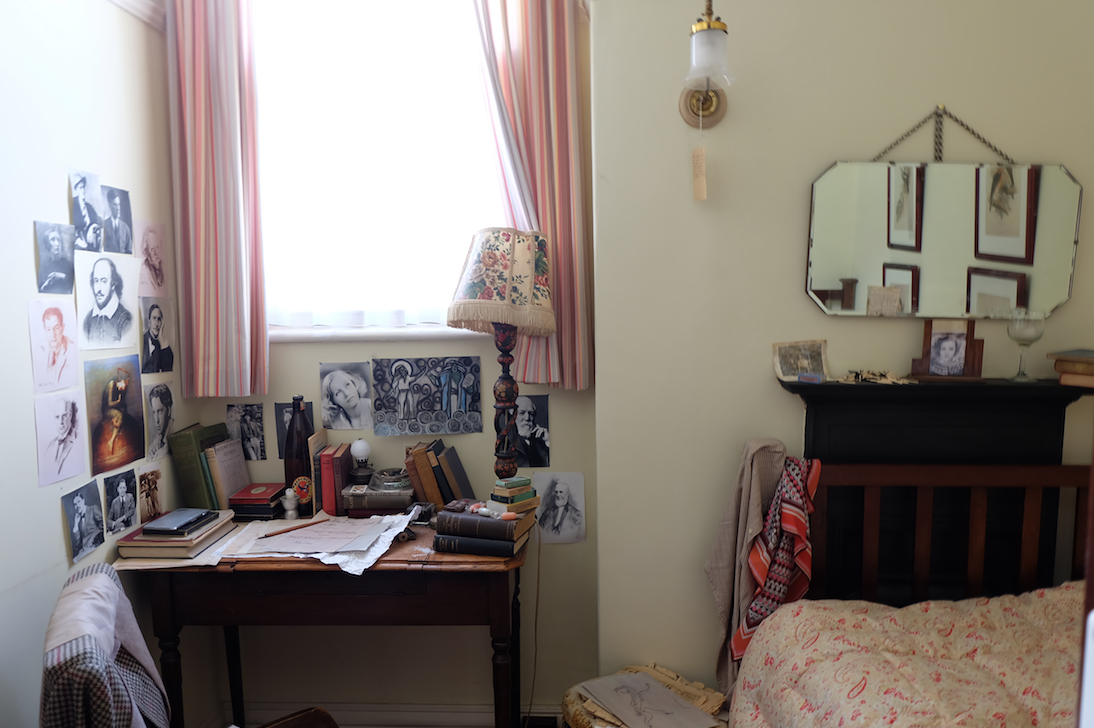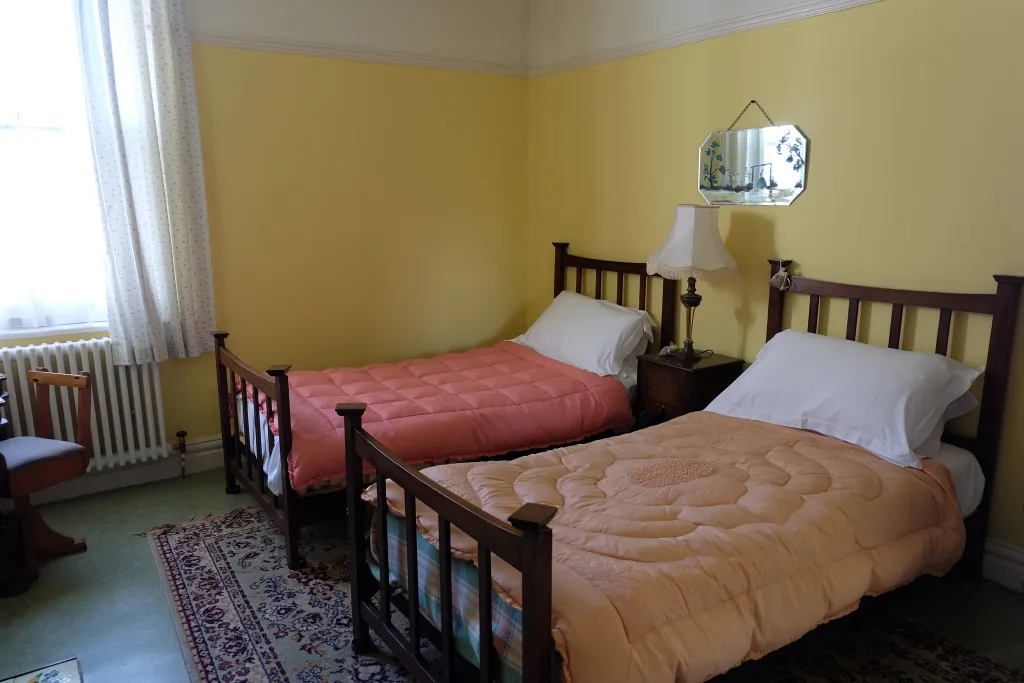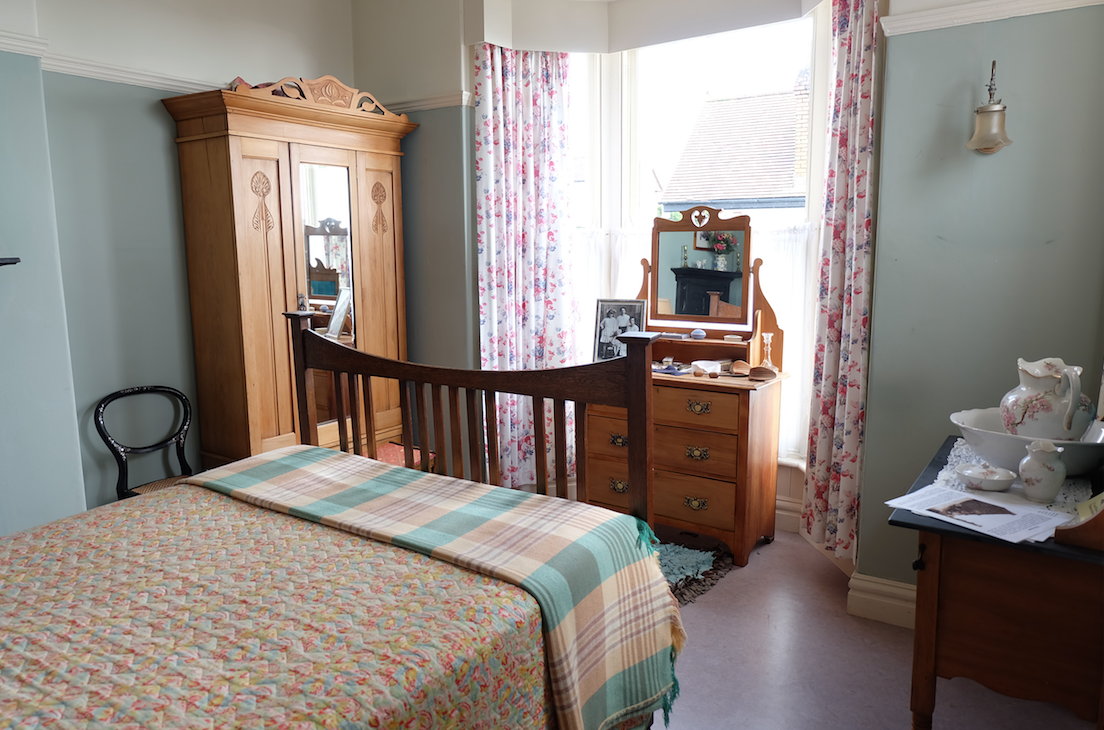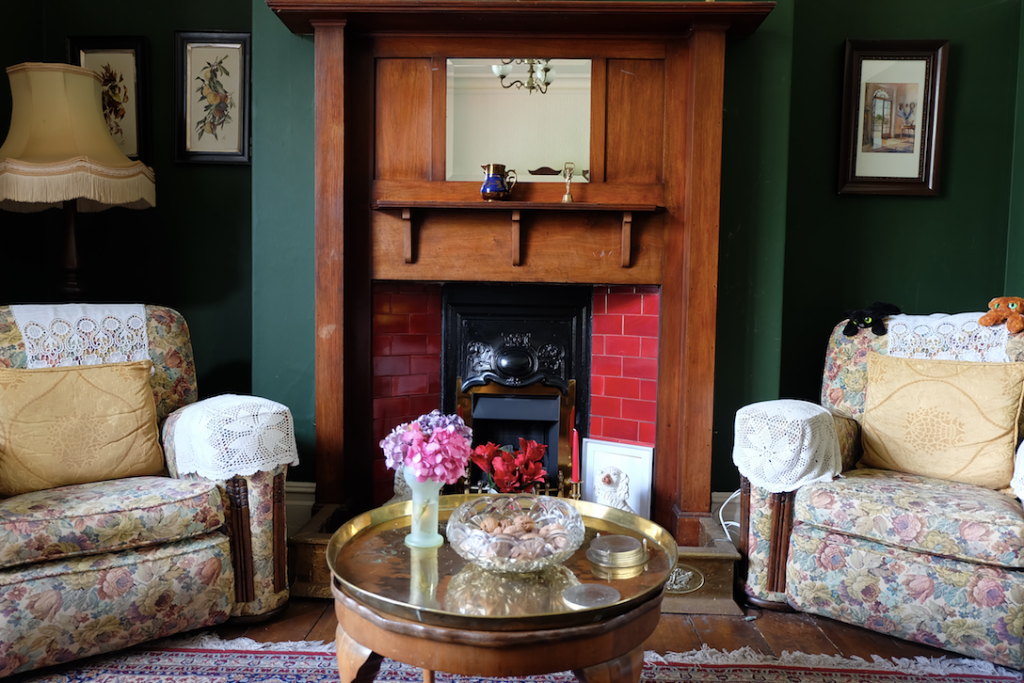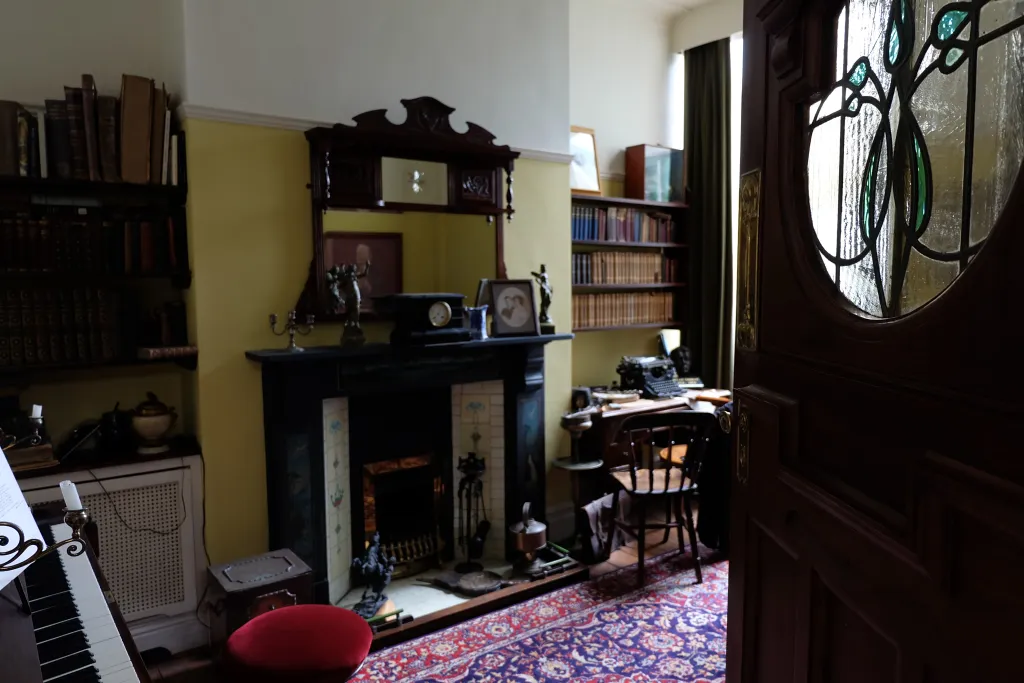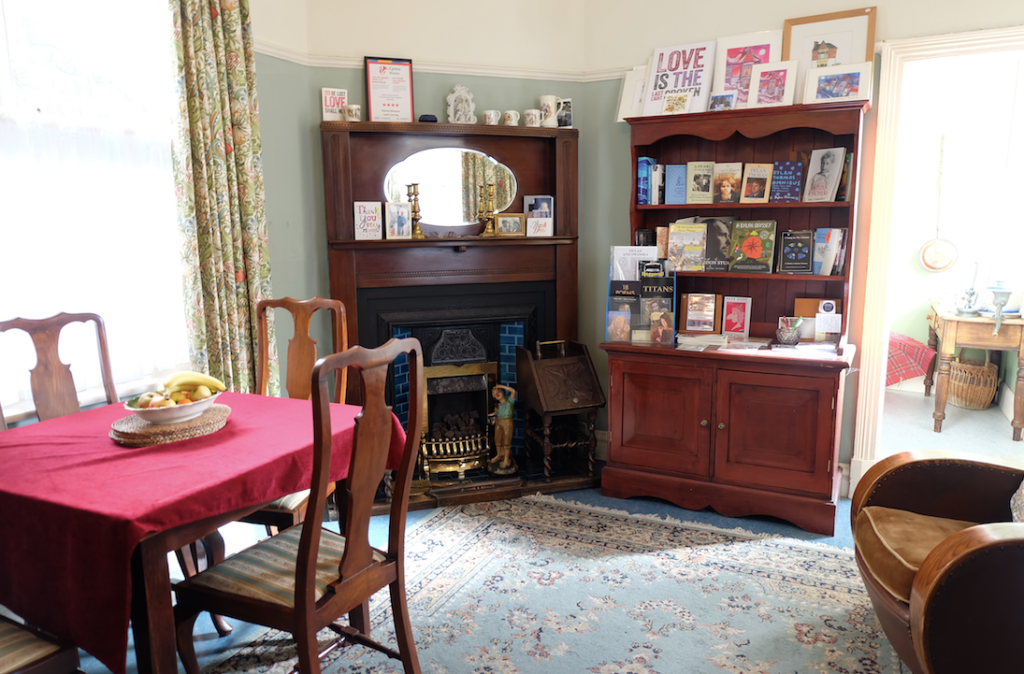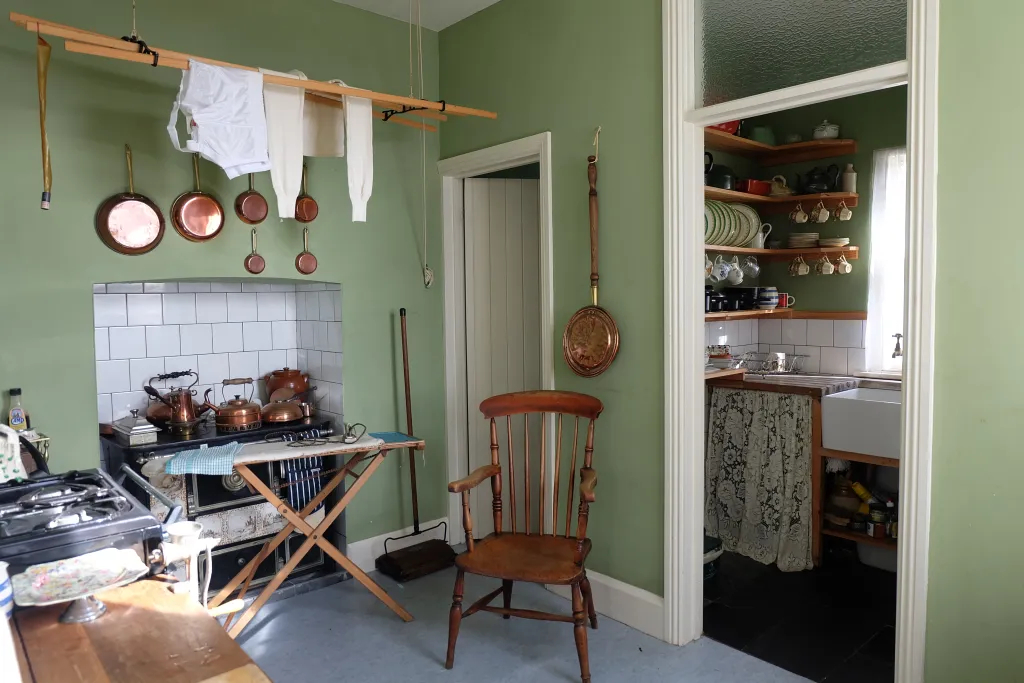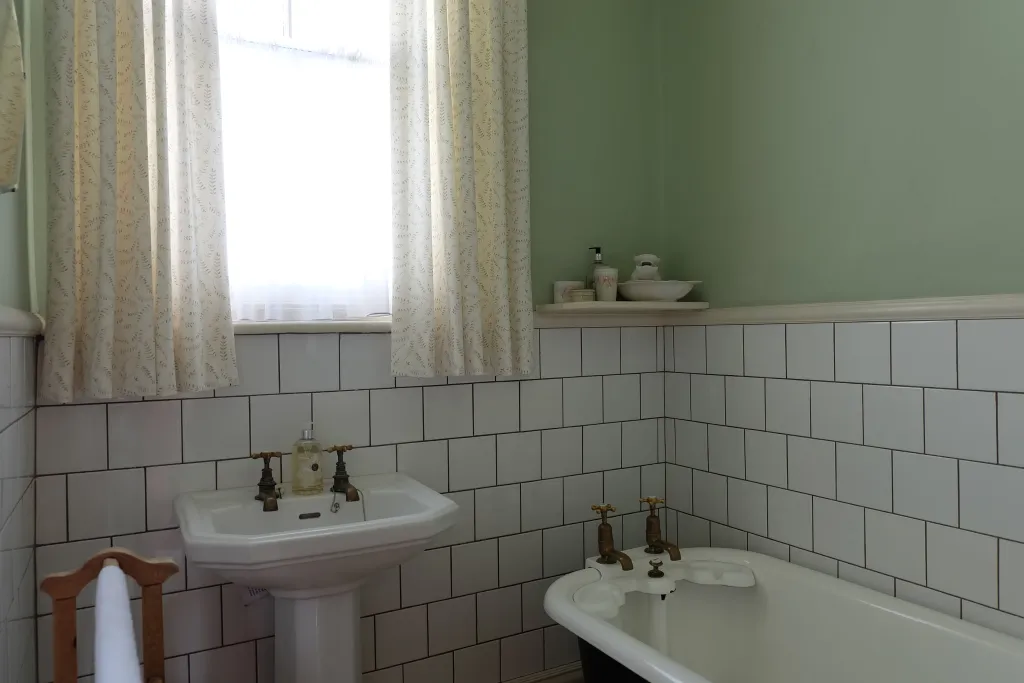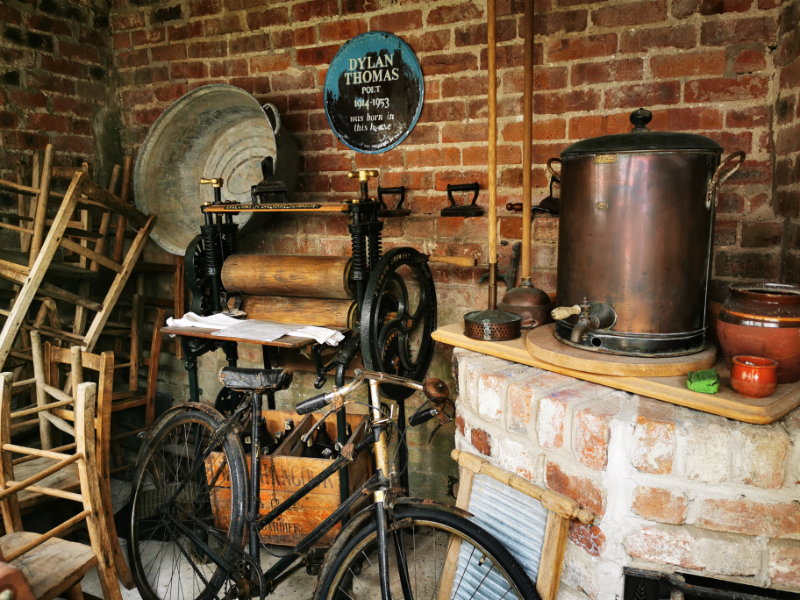The Dylan Thomas Birthplace
Room by Room
The Rooms
Walk in Dylan’s footsteps…
Dylan’s Bedroom
It might beggar belief that the man who wrote words of such huge international impact slept in the tiniest of bedrooms. This ‘box room’ has the only working gas lamp in the house, a single bed, a desk and a small chair but it also has a snugness that envelops you.
Front (Best) Bedroom
The room where baby Dylan first drew breath.
For most of the twenty three years that the Thomas family lived at 5 Cwmdonkin Drive the front bedroom was kept for ‘best’. It was the show room of the first floor, with views over Cwmdonkin Park. Although it was not his parent’s bedroom, it was the ‘best’ room upstairs and was the only room suitable for someone outside of the family to see.
Dylan’s Sister’s Bedroom
Dylan’s sister Nancy was eight years old when he was born and later she was described as an attractive, outgoing young lady who had ambitions as an actress. Situated directly over D.J. Thomas’ study, Nancy’s bedroom was the only bedroom with a built in wardrobe. The wardrobe is typically Edwardian, it is shallow and has clothes hooks instead of a clothes rail – modern for 1914 when people didn’t have many clothes but not the most convenient in the 21st century. The print of Welsh actress Sarah Siddons over the mantelpiece indicates Nancy’s interest in what she saw as ‘glamour’.
Dylan’s Parents’ Room
The back bedroom was where Dylan’s parents slept except when they had taken in a lodger. The back of the house was the warmest part and the bedroom was over the kitchen where the range was kept burning most of the time. The back bedroom is the place where Dylan’s description of an “…ugly, lovely town…crawling, sprawling by a long and splendid curving shore” makes sense. This is the only room in the house that has an uninterrupted view of the beautiful Swansea Bay with the north Devon coastline on its horizon.
The Parlour (The Best Room)
The Thomas’s called the front room downstairs the lounge (but we think they would have called it the front room when on their own!) The lounge was only used on high days, holidays and if someone was visiting the house. It was a room which had the best furniture and would have been kept clean and tidy, just in case (just in case anyone should look through the window or visit!).
The 10ft high ceiling and full-length bay window add an extra feeling of space to this large room. The deep green walls together with stripped floorboards and William Morris curtains compliment the original features of the ceiling, fireplace and door. Apart from a chaise lounge, the only seating is a three-piece suite which is far more ergonomically friendly and comfortable than its modern equivalent. If you want sounds other than the grandfather clock ticking, the wind-up phonogram is in the corner waiting to entertain you.
Dylan’s Father’s Study
This room was DJ Thomas’s domain – a very male room which would now be called his ‘personal space’. DJ was a Welsh speaker, an academic, a piano player, a smoker, a drinker and an anglophile. He surrounded himself with the classics and kept up to date with contemporary books from the Boots lending library.
The Living Room
This was part of Florrie’s (Dylan’s mother) world where the family met to eat and converse. Leading directly off the kitchen, the living room was exactly what the name suggests. It was the family’s main room, a place to eat and gather. To maintain image, though, it was called the dining or breakfast room. In this room all the best crockery was kept in the built-in china cupboard. The every day crockery, of course, was kept in the scullery, where no ‘outsider’ would have trod. Two large windows prevented this room from being dark and dismal in those gas-lit days. Heavy, well-made curtains would have adorned them to ‘keep up appearances and keep out the cold.
The Kitchen
Florrie cooked twice a day with the help of a daily maid and a Monday maid to help with the washing. Off the kitchen is the pantry or larder where food was kept cool and the scullery with its deep sink and storage for every day crockery and the pots and pans. To romanticise the kitchen as the heart of 5 Cwmdonkin Drive would not be fair to Florrie Thomas. The coal fired range would be kept alight 24 hours a day and all cooking was done on it. Above it would have been an ‘aunt sally’ to dry clothes. This room was where Florrie worked hard to make cakes, nourishing meals, preserve or pickle fruit and vegetables on a very tight budget. The scullery and pantry are like built in cupboards in the kitchen. The pantry is also lined with shelves to store food and the 20th century equivalent of a refrigerator was a large stone slab for storing dairy produce and perishables.
Nowadays, guests who stay with us can prepare simple meals in this kitchen, as we have installed a stove, an oven and a mini refrigerator.
The Bathroom
“…I am lying in the bath…the click, click of the geyser sounds like the distant champing of a lady tenor…“ Dylan Thomas.
Typical of the Edwardians’ need for sanitation, the bathroom is simply a room to bathe in. With the pedestal wash hand basin and wonderfully deep cast iron bath standing on ball and claw legs, the bathroom is filled with an invitation to soak away the pressures of everyday life. The lavatory is next to the bathroom. In the Welsh language this is often called the ‘ty bach’ which translates as the ‘little house’ – the term would have been used when lavatories were sheds at the bottom of the garden! As a desirable residence, 5 Cwmdonkin Drive boasted an inside lavatory separate to the plumbed in bathroom.
‘I shall probably turn shy and hide myself in the lavatory all day (up the stairs, first to the right).’ Dylan Thomas.
The Wash House
Side by side in the small back garden are the wash house and coal shed. It was in the wash house that the Thomas’ Monday maid would light the coal fired ‘copper’ to boil water to do the weekly wash (household washing was always done weekly on a Monday). The water would be carried into the scullery and the washing done by hand. The mangle – the turn of the 20th century equivalent to a spin drier – was also kept there with possibly an indoor clothes line for days when it rained.
“…space at back sufficiently large for wash-house, clothes line, deck-chair, and three sparrows…”

